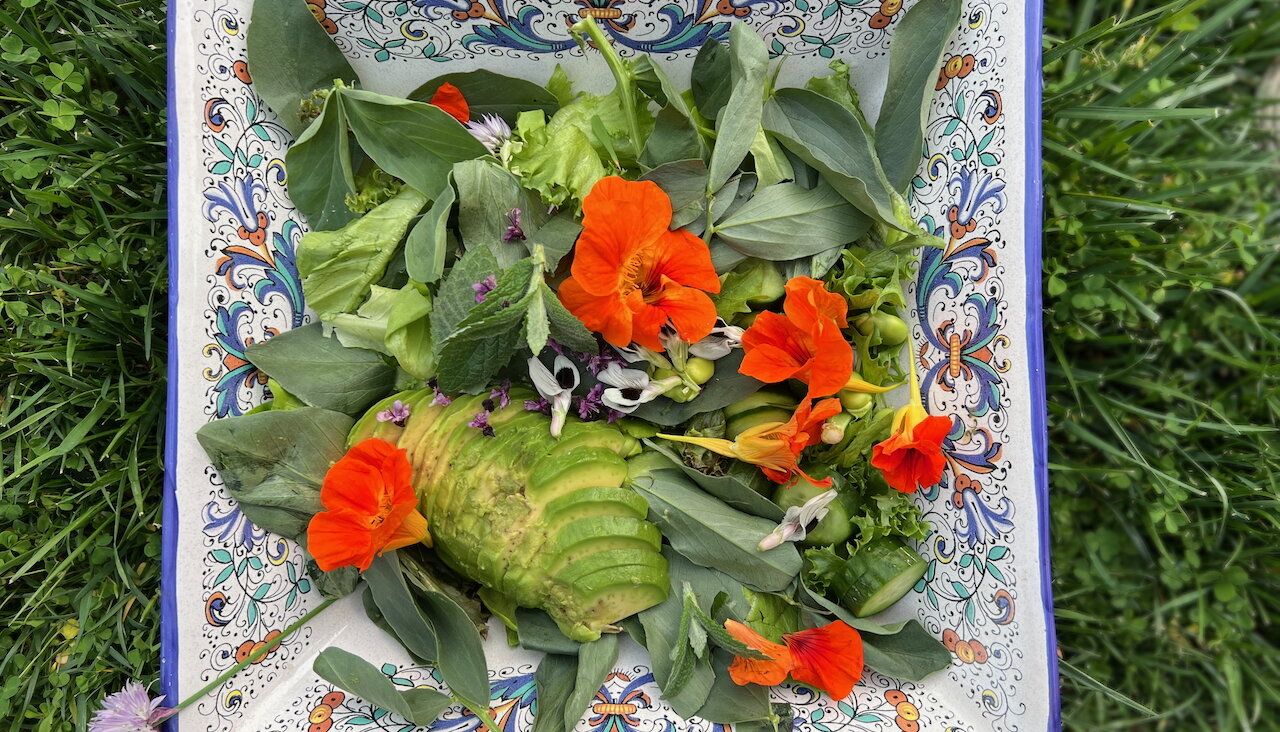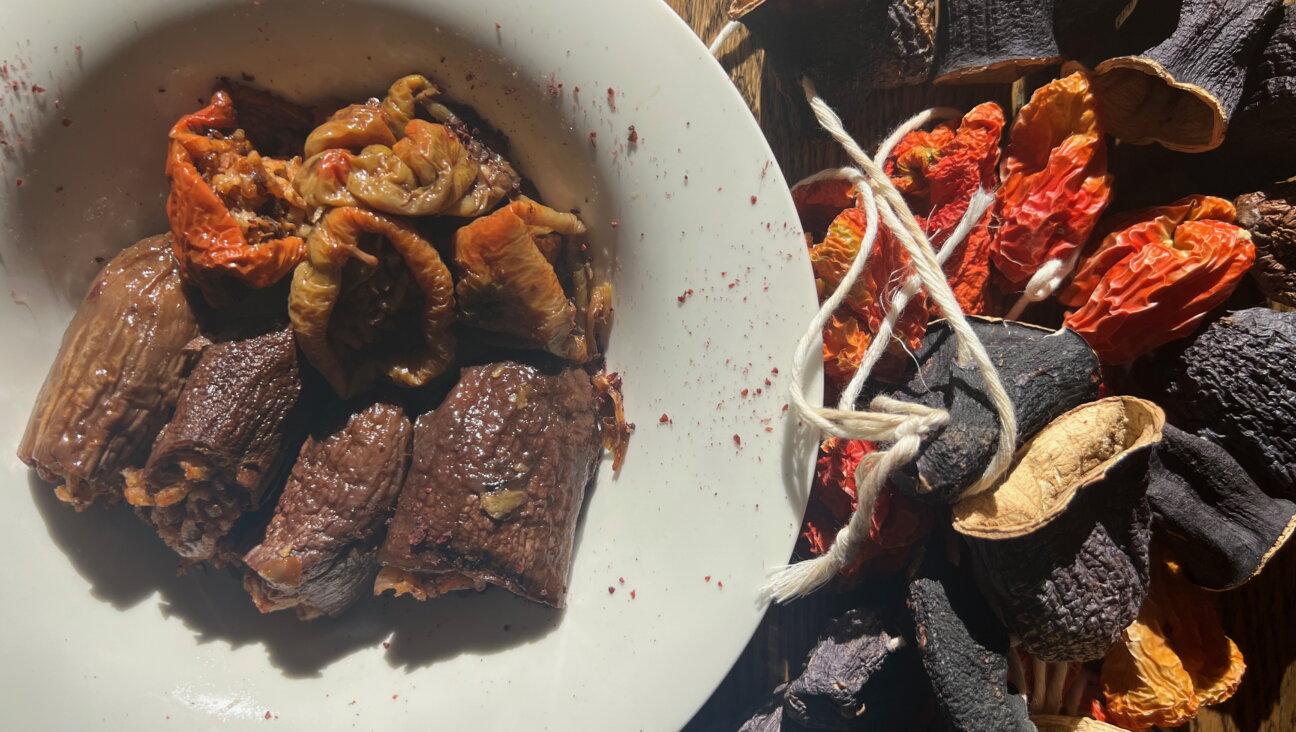An e-Love Letter to Schmaltz

Image by Courtesy of Michael Ruhlman
Plenty of formerly maligned foods have been catapulted into the culinary spotlight. Just look at the makeover Brussels sprouts have received in recent years, or the heftier price tag that anything fried in duck fat can demand. But schmaltz just can’t seem to get a break. James Beard Award-winning food writer and cookbook author Michael Ruhlman latest volume, “The Book of Schmaltz: A Love Song to a Forgotten Fat” is trying to change that.
“It’s this wonderful cooking fat that needs to be better used,” said Ruhlman in a phone interview. “I mean, if you have had potatoes fried in schmaltz — they rock!” And so he turned to his neighbor Lois — an Ashkenazi Jewish woman in her 70s — to teach him the magic of rendered chicken fat.
The result is a self-published iPad app (hardcover and ebook formats will be published by Little Brown in the fall, 2013) with one basic schmaltz recipe with step-by-step photos (both Lois and Ruhlman insist on the addition of onion), plus nine traditional uses and 15 contemporary recipes.
Ruhlman, who is not Jewish but professes to be fascinated by Jewish cuisine, covers most of the bases with recipes for schmaltz-heavy matzo ball soup, chopped liver, cholent, kugel, knishes, and more. He then shows adventurous home cooks the potential of schmaltz with sophisticated recipes like Parisienne gnocchi and pate de foie gras en terrine. (While you won’t find any overtly treyf ingredients in the book, many of the contemporary recipes, like the vichyssoise with gribenes and chives and the brioche, contain dairy along with the meaty schmaltz.)
Of course Ruhlman, who has authored cookbooks with culinary greats like Thomas Keller and Michael Symon, puts his own spin on even the most classic recipes. Fish sauce, hardly a shtetl pantry staple, appears in the egg and gribenes spread, for example. Ruhlman also adds red wine vinegar to Lois’s traditional chopped liver recipe, which she says is “insanity.” He promises that the acid helps to balance the richness and accentuate the flavor.
In an audio clip in the app, Lois says, “I love the continuity of schmaltz in our family, in the history of the Jewish people, in the food — it’s what holds everything together, or did for a very long period of time. Now it’s become unique, or something exotic, which it shouldn’t be. It’s very basic and long-term.”
Despite its prevalence in Europe, schmaltz use began to decline in Jewish homes by the 1900s. “In America,” writes Gil Marks in the “Encyclopedia of Jewish Food” “schmaltz early on in the twentieth century lost some of its importance, due to the availability of kosher oils, margarine, and vegetable shortening…”
Ruhlman offers a few of his own explanations for why schmaltz has fallen out of favor. Number one? Our fat-phobic culture. “Here in America everyone is so afraid of fat,” he says. “I’m sort of a fat evangelist. Not that I think that we should start eating tons and tons of fat. It isn’t great for you…but we shouldn’t be afraid of it either.” In Jewish homes, Ruhlman has found, schmaltz has been dubbed “heart attack food.”
Beyond the health implications, says Ruhlman, “it’s sort of cloistered in the world of Jewish cuisine, which is…not widely embraced by the population at large.” But as he shows in this cookbook, schmaltz has applications well beyond the conventional Jewish kitchen. For example, he uses it as an emulsifying agent in a kosher béarnaise-like sauce in place of butter to be spooned over chicken. And he swears by the schmaltz brioche: “It creates a texture and a crust that is just uncommon when you make traditional brioche.”
Perhaps this book won’t lead to high-end chefs bragging about schmaltz fries on their menus. But it’s a good start. People are frying with duck fat, so schmaltz shouldn’t be too far behind. Right?
Schmaltz-Roasted Potatoes with Onion and Rosemary
Serves 6
Potatoes cooked in animal fat — beef, chicken, duck, or turkey — are superior to those cooked in vegetable fat. Something about these fats makes the potatoes especially crisp. Furthermore, the fat itself is deeply flavorful, and the potatoes absorb this flavor. For this reason, any kind of potato — from shredded potatoes for latkes or hash browns to French fries to leftover mashed potatoes — fried in schmaltz is fabulous. Here, the savory schmaltz combines with the rosemary and sweet onion to make a simple but delicious side dish.
1/4 to 1/3 cup (60 to 80 grams) schmaltz
3 large russet potatoes, cut into medium dice (peel them if you wish)
1 Spanish onion, cut into medium dice
1 tablespoon freshly minced rosemary
Kosher salt and freshly ground black pepper
1) Put a heavy-gauge roasting pan or sturdy sheet tray in your oven and preheat the oven to 425°F/220°C.
2) Remove the pan from the oven and add the schmaltz (I speed the melting by putting the tray over a hot burner). Add the potatoes, stir to coat with the fat, and roast for 15 minutes.
3) Add the onion and stir to coat. Return the pan to the oven and roast, stirring as necessary, until the potatoes are golden brown and crisp, another 30 minutes or so.
4) Sprinkle the potatoes with rosemary and season with salt and pepper to taste.
Reprinted with permission from “The Book of Schmaltz: A Love Song to a Forgotten Fat” (Ruhlman Enterprises, 2012).
The Forward is free to read, but it isn’t free to produce

I hope you appreciated this article. Before you go, I’d like to ask you to please support the Forward.
Now more than ever, American Jews need independent news they can trust, with reporting driven by truth, not ideology. We serve you, not any ideological agenda.
At a time when other newsrooms are closing or cutting back, the Forward has removed its paywall and invested additional resources to report on the ground from Israel and around the U.S. on the impact of the war, rising antisemitism and polarized discourse.
This is a great time to support independent Jewish journalism you rely on. Make a gift today!
— Rachel Fishman Feddersen, Publisher and CEO
Support our mission to tell the Jewish story fully and fairly.
Most Popular
- 1

Fast Forward Ye debuts ‘Heil Hitler’ music video that includes a sample of a Hitler speech
- 2

Culture Cardinals are Catholic, not Jewish — so why do they all wear yarmulkes?
- 3

News School Israel trip turns ‘terrifying’ for LA students attacked by Israeli teens
- 4

Fast Forward Student suspended for ‘F— the Jews’ video defends himself on antisemitic podcast
In Case You Missed It
-

Fast Forward Police clash with pro-Palestinian protesters in Brooklyn as Columbia library takeover fallout continues
-

Opinion This week proved it: Trump’s approach to antisemitism at Columbia is horribly ineffective
-

Yiddish קאָנצערט לכּבֿוד דעם ייִדישן שרײַבער און רעדאַקטאָר באָריס סאַנדלערConcert honoring Yiddish writer and editor Boris Sandler
דער בעל־שׂימחה האָט יאָרן לאַנג געדינט ווי דער רעדאַקטאָר פֿונעם ייִדישן פֿאָרווערטס.
-

Fast Forward Trump’s new pick for surgeon general blames the Nazis for pesticides on our food
-
Shop the Forward Store
100% of profits support our journalism
Republish This Story
Please read before republishing
We’re happy to make this story available to republish for free, unless it originated with JTA, Haaretz or another publication (as indicated on the article) and as long as you follow our guidelines.
You must comply with the following:
- Credit the Forward
- Retain our pixel
- Preserve our canonical link in Google search
- Add a noindex tag in Google search
See our full guidelines for more information, and this guide for detail about canonical URLs.
To republish, copy the HTML by clicking on the yellow button to the right; it includes our tracking pixel, all paragraph styles and hyperlinks, the author byline and credit to the Forward. It does not include images; to avoid copyright violations, you must add them manually, following our guidelines. Please email us at [email protected], subject line “republish,” with any questions or to let us know what stories you’re picking up.















